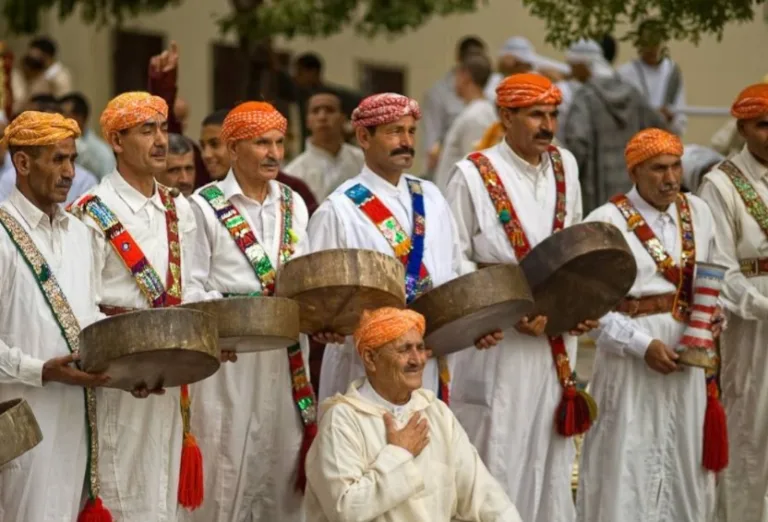Rabat – Morocco’s 2.3 million populated Oriental Region is considered to be the gateway to Africa due to its geographical position. The region is situated in the north east of the Kingdom, with an area of 90.000 km² that is surrounded by the Mediterranean sea from the north.
It is home to a wealth of hidden gems scattered throughout its land and offers its visitors a choice of activities and destinations. The landscape of the region ranges from golden dunes of sand in the desert, high mountains and green forests, to lively and vibrant beaches that are widely considered to be among the most breathtaking beaches of Morocco.
The geographical position of the region, which has brought it into contact with different civilizations, is responsible for its cultural diversity. To be sure, the region’s lively cultural identity has been influenced by Amazigh, Arab, Andalusian, and Mediterranean cultures. The result of this combination has been a rich culture with exquisite cuisine and diverse musical melodies.
Language is another aspect of the region’s rich, diverse cultural identity. The majority of the region speaks Arabic, while there is a significant number of people who speak Tamazight.
 Morocco’s Oriental region
Morocco’s Oriental region
Oujda
Oujda is the regional capital and the largest city in the Oriental region, and its rich heritage and culture are undoubtedly one of the reasons for the region’s popularity. The city was first founded by Amazigh tribes in the 10th century, but throughout history it has been under the rule of many dynasties such as the Almohades, Marinids, and Alaouites.
The city played the role of a trade center between the Marinids based in Fez (in modern day Morocco) and nearby civilizations. Since then, the city has evolved and has continued to play a critical role as a trade center.
The structure of Oujda is known to keep the old medina at the center of the city and all of the new buildings are set around it. Oujda’s old medina, like all of Morocco’s medinas, is filled with shops and markets selling traditional Moroccan goods Morocco such as jewelry, leather goods, and delicious treats, especially Oujda’s special al-Kaak cookies. An intricate network of narrow and charming alleyways connects these shops to other buildings in the medina.
The narrow streets of the medina are often crowded with visitors who come to buy souvenirs for their stay in Oujda or simply to stroll through the old medina and enjoy the colorful scenery, which includes mountains of spices, beautifully designed clothes or traditional objects with centuries-old significance.
Oujda’s history is marked by a series of civilizations vying for control, each leaving its mark through destruction and renovation. Over the years, this rich history has significantly shaped the city’s unique architecture, which it now proudly displays. From ancient battles to colonial influences, Oujda’s architectural evolution is a testament to its resilience and the rich tapestry of cultures that have left their mark on the city.
Oujda is also recognized as the Moroccan capital of mosques, with around 400 mosques in the city. The Great Mosque of Oujda, built in the 13th century, is one of the most famous mosques and monuments of the city and in the region. The mosque’s minaret is 26 meters high with traditional Moroccan decoration, while the inside contains intricately carved wood, decorated ceilings and chandeliers, making it a breathtaking architectural masterpiece.
Oujda’s rich history of encountering different civilizations with different religious backgrounds has made it famous for its acceptance of all religious ideologies. The city’s Christian churches and Jewish landmarks, such as the Mellah, are evidence of this.
Oujda is considered to be one of the cities that has been most influenced by the Andalusian culture, remnants of which can be found today in the city’s architecture, music, traditions, food, and museums. Andalusian designs and architectural styles can also be found throughout the city, especially in the old medina, allowing visitors to step back in time and enjoy the beauty of the past.
Gharnati, a music genre that originated in Andalusia, influences the music of Oujda. Thanks to the city’s annual festival of Gharnati music, locals and tourists alike have the opportunity to enjoy the music and unique culture of Oujda.
The Maison Dar Sebti, Museum of Oujda, Oujda Art Gallery, and even the walls and gates of the old medina contain remnants of Andalusian culture, with the complicated and intricate culture of the city remaining visible for visitors to enjoy.
The city also offers an escape from the busy and loud life of the medina in safe havens scattered around in the form of parks. These safe havens are filled with tranquility that attracts people from different backgrounds and ages, who wish to take a break, enjoy the beauty of the sky and the trees, and get a breath of fresh air before going back to the bustling life of the city.
Nador
Situated on the coast of the Mar Chica saltwater lagoon that separates the city from the Mediterranean Sea, Nador was established by local tribes in the 19th century and is home to a significant number of Amazigh people.
Nador is considered the second largest city in the Oriental Region.
Originally, the city’s economy relied heavily on agriculture and fishing, with the Port of Nador ranking as one of the country’s most crucial ports and serving as a key gateway between Europe and Africa.
Over time, Nador has undergone significant renovations and development projects, leading to the emergence of a thriving tourism sector that has become a major economic driver.
With soon to be launched development projects, the city is expected to become one of the largest tourist resorts in the country, but for now Nador is still attached to its calm and traditional lifestyle that tourists can explore and enjoy.
Nador has an exceptional history and rich cultural heritage, having been under Spanish rule from 1912 until Morocco’s independence in 1956. Spanish remnants are still found in the city, either in the architecture or in the traditions and food.
The locals can also speak Spanish as a result of their ancestors’ history with Spain and due to the city’s proximity to Melilla.
The city offers a range of activities for its visitors, such as going for a walk next to the saltwater lagoon or in the streets of the souk to stock up on traditional Moroccan clothes, jewelry, ceramics, and other goods.
The landscape of the area is also worth exploring: Mount Gourougou and Cape Three Forks are the leading destinations for people who enjoy hiking and taking in the beautiful scenery of the mountains and the secluded beaches.
Nador is renowned for its beaches, a natural consequence of its location in the North of Morocco – being only separated from the Mediterranean by a saltwater lagoon.
Clear turquoise water, golden sands, and beautiful sunsets are what awaits the visitors of the city’s various beaches..
The city is also a safe haven for migratory birds, due to its unique natural landscape which attracts birds such as greater pink flamingos, great crested grebes, and avocets. This makes Nador an intriguing and must-see destination for bird watchers as well.
Situated a few kilometers away, Selouane is for the history buffs and for those who enjoy the aesthetic and busy environment of the traditional Moroccan souk, with the Kasbah of Selouane which dates back to the 17th century being a major attraction.
Berkane
Mentioned by Roman chronicles, Berkane enjoys a rich history.
Situated near Tafoughalt where human presence has been documented dating back 40,000 to 100,000 years in the past, the city is bursting with archaeological sites that history and archaeology fanatics find interesting, such as Zegzel’s prehistoric Pigeon and Camel Caves.
Situated on a rich plain in the northern east of Morocco, Berkane is known to be an agricultural city, providing fruits and vegetables for the whole country.
It is also known for its semolina mills which are used to produce Couscous, a national dish in Morocco. Renowned for its clementines and oranges all over the world, the city was also named Morocco’s citrus capital.
Berkane has a commercial strip filled with shops that sell different products such as souvenirs and jewelry. The avenue is also decorated with cafes along the street that allow its visitors to stop time and enjoy a hot cup of coffee while admiring the busy life of the city.
Notably, Berkane is home to the olympic runner Hichame El Guerrouj, who holds the world record for the fastest mile and the current record in the 1500m and 2000m sprints.
Saidia
Located 30 km from Berkane, Saidia (often referred to as the Blue Pearl of Morocco) is a coastal town on the Mediterranean Sea. With a 14 kilometer long coastline, the city has one of the longest beaches in Morocco.
Nador, in Morocco’s Oriental region
Saidia has been recently subject to a handful of development projects and renovations to make it even more attractive to tourists. With shopping centers, hotels, golf courses and other sports centers, the city has quickly become a favorite destination for both Moroccan and foreign tourists.
The marina of the city offers its visitors the opportunity to enjoy Saidia at night either through a walk alongside the coast or through having a nice dinner while enjoying the view of the moon-lit sea.
The Oriental Region is rich in history, culture, nature, and activities, which makes it a perfect destination for tourists.
From hiking and enjoying the scenery and serenity of the lonely mountain top to treating your taste buds to an exquisite cuisine that was influenced by so many cultures and civilizations, the Oriental Region has much to offer tourists coming from Morocco or abroad.
















